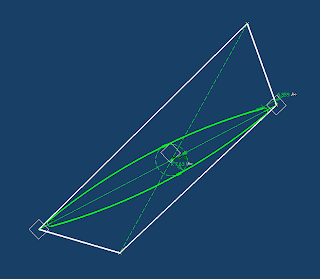Assignment 6 | Power Copies
First Try
Creating the framework
Put panels on per cell grid
Creating diagonal distance as reference
draw openings on the mean plan
Use fill surface to cover the cell grid and go passing through the passing point
Produce the cutting hole as 'aperture'
Make powercopies of that standard cells and apply for the rest of the grid cells
Finished 'Torch Flower'





















